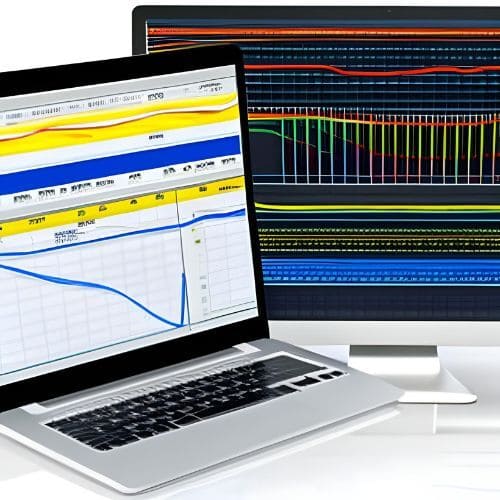Harmonic Study and Analysis
In addition to a thorough study and analysis of harmonics, CareLabs provides electrical installation services such electrical safety inspections, testing, calibration, and certification.
Get Your Harmonic Study Report Now
Contact our experts for trustworthy solutions suited to your company's needs.
To ensure that your electrical safety program is current, compliant, and comprehensive, experts will review harmonic risks, training materials, documentation, and personal protective equipment (PPE). CareLabs is able to identify harmonics early on and take the appropriate safety measures to lessen their impact, ensuring the equipment’s security. Electrical systems may become inefficient when there are harmonic electric voltages and currents. They generate ineffective heat and have the potential to degrade the quality of power. A mathematical method for predicting resonances and harmonic distortion levels is harmonic voltage analysis. Using empirical data, harmonic voltage analysis is a mathematical method for predicting potential resonances and harmonic distortion levels.
Nonlinear electrical switching devices, such as AC variable frequency motors, DC drives, fluorescent lights, and computers, include harmonic frequencies into the electrical system. A significant risk of equipment failure is presented by high harmonic voltage/current levels. Therefore, it is crucial to do a quick harmonic analysis and research. For 415-volt systems, the current harmonic restrictions are 5%, with 4% odd harmonics and 2% even harmonics.


Harmonic Distortion's Effects:
- Accountable for both circulating current and high voltage.
- Due to significant voltage distortion, equipment failure and destruction
- A decrease in component lifetime and a spike in component failure due to an increase in internal energy.
- Branch circuit breakers trip due to a fault
- Measuring error
- Fires and explosions in electrical and distribution systems
- Generator malfunctions
- Decreased system power factor
- Costly installation and utility charges
- Losses in productivity
- Passiveness and unnecessary driving
- The use of larger motors
Although harmonic problems are very uncommon, when they do occur, they tend to reduce the reliability, power quality, and efficiency of the power system. Therefore, harmonic research and analysis are crucial.
- Safeguards against harmonics in current and voltage
- Frequency variance restriction
- Imbalanced voltage and current
- Improve power factor analysis and keep the value around one.
- Controls voltage peaks and valleys
To minimize harmonic-related problems during the design phase and reduce the risk of unexpected consequences, harmonic research and analysis will help shed light on the likely cause and effect of power quality concerns.
Harmonic Analysis and Study Flow of work at CareLabs:
- On the electrical single-line diagram, draw special attention to any possible nonlinear loads, capacitor banks, and long medium-voltage cables.
- Find the PCC (common coupling point)
- Identify the facility’s system buses that are susceptible to harmonic distortions.
- For each nonlinear load, collect harmonics data.
- Obtain crucial data on the highest and lowest short circuit fault levels for the chosen PCC’s voltage and current harmonics.
- Using ETAP (Electrical Transient Analysis Program), analyze the electrical network’s harmonics.
- Calculate the buses’ and PCC’s overall and individual current and voltage wave distortion values.
- Create a diagram of the harmonic frequency spectrum.
- If harmonic distortion levels are too high, an appropriate mitigation approach is suggested and put into practice.
- Rerun the study after putting the mitigation plan into action.
Harmonic Analysis and Study Flow of work at CareLabs:
- On the electrical single-line diagram, draw special attention to any possible nonlinear loads, capacitor banks, and long medium-voltage cables.
- Find the PCC (common coupling point)
- Identify the facility’s system buses that are susceptible to harmonic distortions.
- For each nonlinear load, collect harmonics data.
- Obtain crucial data on the highest and lowest short circuit fault levels for the chosen PCC’s voltage and current harmonics.
- Using ETAP (Electrical Transient Analysis Program), analyze the electrical network’s harmonics.
- Calculate the buses’ and PCC’s overall and individual current and voltage wave distortion values.
- Create a diagram of the harmonic frequency spectrum.
- If harmonic distortion levels are too high, an appropriate mitigation approach is suggested and put into practice.
- Rerun the study after putting the mitigation plan into action.


Advantages of CareLabs Service:
Higher ratings are used in the second stage if background harmonics have already been measured.
- If the background is less than 25%, Stage 2 permits altering the converter size according to the fault level and converter type.
- The lower half of the converter grade is acceptable if the background is between 25% and 75%.
- A comprehensive harmonic analysis is done for the upper background.
To guarantee that our personnel are available nearby in the event of a routine or urgent crisis, CareLabs has crew members stationed in many locations. CareLabs has quickly made a name for itself as an ISO 9001:2008-certified business with a devoted customer that has provided excellent feedback. In numerous important Argentine cities, such as Buenos Aires, Córdoba, Rosario, and Mendoza, we do harmonic research and analysis. Get in touch with us right now to arrange your harmonic analysis and study in Argentina or to get a quote!
OUR SERVICES

Analysis


Analysis








